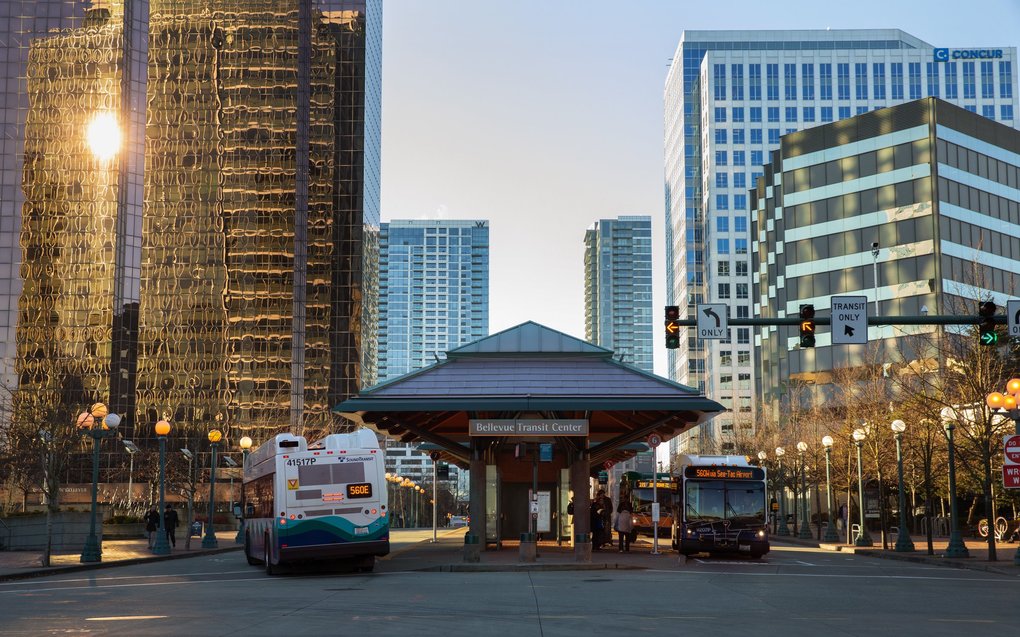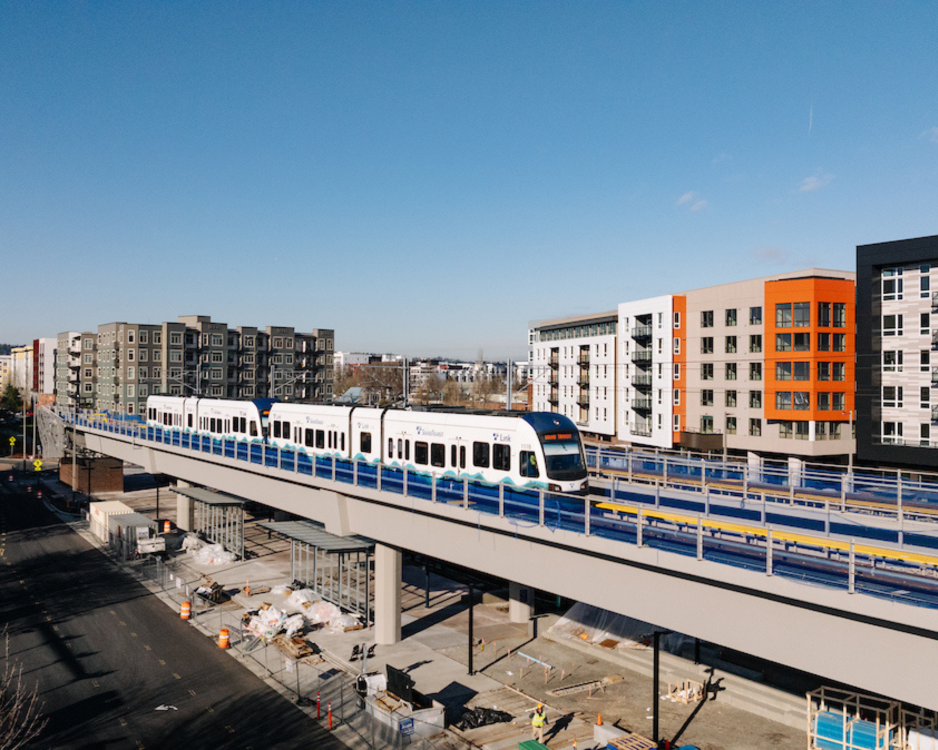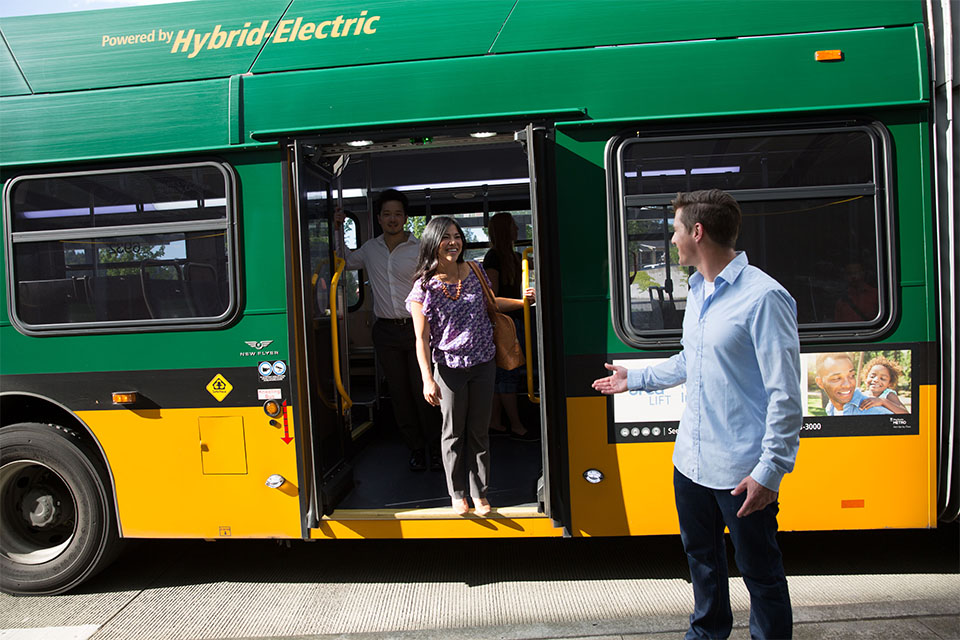The Journey So Far: Bellevue’s Transit Evolution
Posted on June 26, 2025As Bellevue continues its growth as a major economic and residential hub, its transportation story is more than a tale of transit—it’s a roadmap for sustainable, inclusive urban growth. In partnership with regional agencies like King County Metro and Sound Transit, the city transforms how people move to serve the environment better, expand opportunity, and boost its appeal as a destination for talent and investment. This evolution, from streetcars and buses to high-capacity light rail and trail networks, is central to achieving Bellevue’s climate goals, fostering equitable access, and shaping a future where transit is not just a service, but a foundation for livability. What follows is a look at that journey—past, present, and future—through the lens of purpose-driven mobility.

Metro takes over
In 1973, King County Metro Transit was formed to consolidate regional bus services—including Bellevue’s—and ushered in initiatives like articulated buses, suburban park‑and‑ride lots, and the Downtown Seattle Bus Tunnel. In 1985, the Bellevue Transit Center opened , evolving significantly through renovations and service expansions over the decades.
Crafting the regional vision
Sound Transit was born in 1996 through the "Sound Move" plan, backed by local voters. This visionary strategy introduced ST Express buses (1999) and commuter rail, then light rail in Tacoma in 2003. Successive ballot measures in 2008 and 2016 secured funding for projects, including the pivotal East Link Extension, which will eventually connect Seattle to Redmond. The Seattle to Bellevue connection is planned for in early 2026 (see details below)

East Link Lights Up the Eastside
Breaking new ground
By April 2024, Bellevue welcomed its first taste of light rail, opening an eight‑station segment between South Bellevue and Redmond Technology as part of the 2 Line (East Link). This 6.5‑mile stretch, part of a larger 14‑mile corridor from Seattle to Redmond, offers trains every 10 minutes from morning through evening.
Impacting growth & equity
The light rail opening on the east side has already spurred rapid office, business, and multi-family residential development. Downtown Bellevue has seen its most intense redevelopment in decades, and the Bel‑Red corridor is being reshaped through mixed‑use, transit‑oriented neighborhoods like the Spring District. City planners and officials hope this mutually beneficial expansion of light rail and dense urban development translates into improved access to jobs, affordable housing, and greener, more pedestrian‑friendly urban spaces.
Onwards & Upwards: The Future of Transit in Bellevue
Full East Link 2 Line & new connections
Sound Transit’s light rail network will expand further in early 2026, when service will extend across Lake Washington via I‑90 into Mercer Island, Judkins Park, and Seattle. This milestone will fully integrate Bellevue with Seattle’s transit sphere.
Bus Rapid Transit (BRT) enhancements
The RapidRide B Line has already strengthened Eastside bus service since 2011, running between Bellevue Transit Center and Redmond Downtown Station . Looking ahead, Bellevue Transit Center is set to become a hub for Sound Transit’s Stride BRT lines—S1 to Renton/Burien (2028) and S2 to Bothell/Lynnwood (2029), bolstering regional connectivity.
Trail & bike network expansion
Bellevue’s commitment to multimodal transit shows in the development of Eastrail, which was converted from the former Eastside Rail Corridor to a multi-use trail. Over recent years, segments have linked Kirkland, Bellevue, and surrounding areas. This corridor not only supports cycling and walking but also reinforces the city’s goal for a car-light future that prioritizes sustainable transportation modes.

Why this matters for Bellevue
- Climate-friendly urban living: Light rail, BRT, and trails reduce car usage and greenhouse gas emissions, vital for meeting Bellevue’s climate goals, as well as air and water pollution.
- Inclusive growth: Transit-rich neighborhoods offer the freedom of mobility and improved access to jobs, housing, and services, boosting economic opportunities for all residents, including those who are transit-dependent.
- Competitive edge: Seamless transit and mobility make Bellevue more attractive to businesses, talent, and investors, connecting it tightly with Seattle, Redmond, and beyond. This is especially the case with younger generation workers who prefer a transit-supported lifestyle and urban living over car-dependency and sprawl.
- Public safety: A robust transit system contributing to fewer cars on the road and more pedestrian activity aligns with the City of Bellevue’s Vision Zero Initiative (and corresponding Vision Zero Strategic Plan), which aims to eliminate traffic deaths and serious injuries on city streets by 2030.
- Public health: Transit is good for public health as it provides access to physical and mental health services, reduces isolation, particularly for seniors and people with disabilities, and provides a more physically active and less stressful way for Bellevue travelers to get around.
Bellevue's transit narrative reflects a city in transformation, from early streetcars and park-and-ride buses to a transit-first future, where light rail and rapid buses reshape how we live, work, and play. As East Link matures, bus networks improve, and trails flourish, Bellevue continues to evolve, choosing sustainability, accessibility, and connectivity for all travelers, and livability for future generations.
Sources:
https://www.soundtransit.org/get-to-know-us/our-history
https://www.axios.com/newsletters/axios-seattle-d5b19d50-0332-11ef-aa9b-7b7d0563dfe6?utm_
https://www.soundtransit.org/system-expansion/east-link-extension

